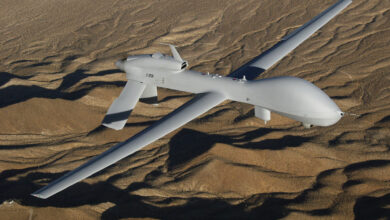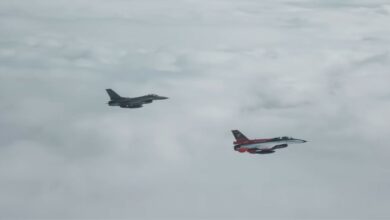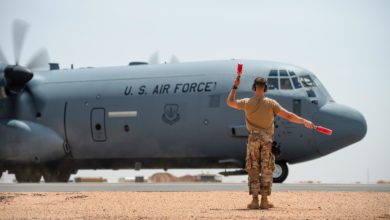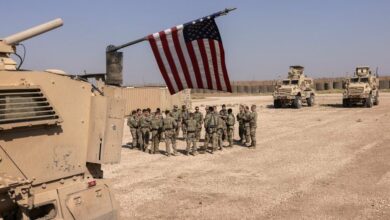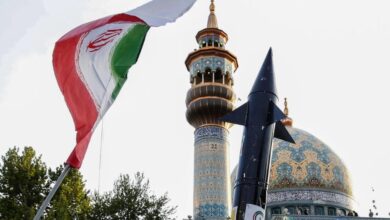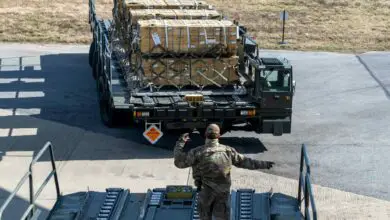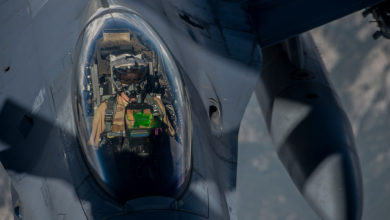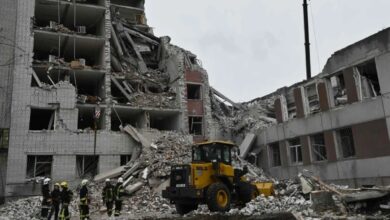
Modernization is a necessary element of any defense program, particularly as our foreign adversaries like China and Russia continue to improve their military capabilities. One of the major programs Congress targets for modernization is the F-35 Lightning II engine.
Such efforts must ensure efficiency, enhance national security, and deliver the best results for American taxpayers. Current government moves to fund an alternative engine for the F-35 fighter will not achieve those results, especially not mid-program — quite the opposite.
Adaptive Engine Transition Program
The F-35 comes in three versions: the F-35A for conventional take-off and landing, used by the Air Force; the F-35B for short take-off and vertical landing, used by the Marines; and the F-35C for catapult-assisted take-off but arrested recovery, used by the Navy.
All three versions use the same Pratt & Whitney (P&W) F135 engine, reducing costs and increasing availability due to interoperability, streamlined logistics, and a common supplier base.
To improve performance and lower costs, some in Congress have urged spending billions of dollars (this is an important point I’ll come back to) to acquire an entirely different engine, the Adaptive Engine Transition Program.

Engine Competition
Some in Congress point to success from “The Great Engine War” of the 1980s and 90s as an example of engine competition done correctly.
That competition pitted P&W against a self-funded (here’s the point I mentioned earlier – no government money was spent on development) General Electric (GE) effort to supply engines to both the F-15 and F-16 fighters. The competition’s sole point was not to reduce cost but to acquire engines with greater reliability.
As the Air Force Safety Center table below shows, the Class A mishap rates dropped precipitously during the “engine war,” and the Air Force improved reliability.
Class A mishap rate per 100,000 flight hours for USAF fighters
| Aircraft | Mishap rate 1980 | Mishap rate 1995 | Average annual lifetime mishap rate |
| F-15 | 4.57 | 1.94 | 4.57 |
| F-16 | 18.65 | 2.59 | 8.30 |
| F-35 | n/a | n/a | 0.15 |
According to the Air Force Safety Center, the Class A mishap causes either more than $2 million in damage ($1M prior to FY2010), a fatality, or permanent disability.
Let’s now examine the four major factors for determining which F-35 engine is the most appropriate to move forward with.
Reliability
As the table shows, the F135 engine does not have a reliability problem. The Class A mishap rate is minuscule – averaging just 0.15 mishaps per year. There is no data for GE’s F136 since it has never flown in a USAF fighter.
Reliability? Advantage F135.
Cost
The F135 engine program is one of the most successful aspects of the F-35. The average cost of the F135 has been reduced by more than 50 percent since the first production lot of engines. This has resulted in an estimated $8.1 billion in engine savings over the program’s life.
The development of the proposed F136 engine would be government funded, to the tune of billions of dollars. Because of design variations in the three F-35 models, the F136 cannot be used in B or C models of the F-35 – only the A model.

Without the advantage of purchasing in quantity, cost savings are very unlikely due to reduced economies of scale, dual logistics trains, and longer training and learning curves.
Cost? Advantage F135.
Performance
The 135 engine is rated at 43,000+ pounds of thrust, and the proposed Enhanced Engine Package would increase that thrust to 47,000+ pounds. General Electric’s F136 engine is rated at 40,000+ pounds of thrust.
Performance? Advantage F135.
Future Growth
The Lightning II – including its engine – is designed for evolving environments and advances in enemy threats. The F135 incorporates a modular design and digital architecture, providing fast, easy upgrades. The Enhanced Engine Package will certainly help.
Future Growth? Advantage F135.
F-35 Engine Modernization Effort
So yes, Congress should fund an F-35 engine modernization effort — but it must fund the right one. Spending billions more taxpayer dollars to build a second engine from scratch seems wasteful and counterproductive, especially when that replacement engine would only be used by the Air Force and not the Navy and Marines.
Lt. Gen. Eric Fick, the F-35 Program Executive Officer, has noted the Air Force alone would be on the hook to pay for it. And as he told reporters in September, considering the requirements for the different services, putting new program engines “on any part of the F-35 fleet would mean at least two power plants to manage for the fleet, and possibly three.”
He’s absolutely right to highlight those realities. Hopefully Congress is listening.
 Scott Vadnais is a retired US Air Force officer and former chief of the press desk at Headquarters US Air Forces in Europe. He supported the USAF Engine System Program Office while on Active Duty and is a former senior strategic planner at General Dynamics. Neither he, nor any family member, have a financial interest in the parties involved in the F-35 engine modernization effort.
Scott Vadnais is a retired US Air Force officer and former chief of the press desk at Headquarters US Air Forces in Europe. He supported the USAF Engine System Program Office while on Active Duty and is a former senior strategic planner at General Dynamics. Neither he, nor any family member, have a financial interest in the parties involved in the F-35 engine modernization effort.
The views and opinions expressed here are those of the author and do not necessarily reflect the editorial position of The Defense Post.
The Defense Post aims to publish a wide range of high-quality opinion and analysis from a diverse array of people – do you want to send us yours? Click here to submit an op-ed.

